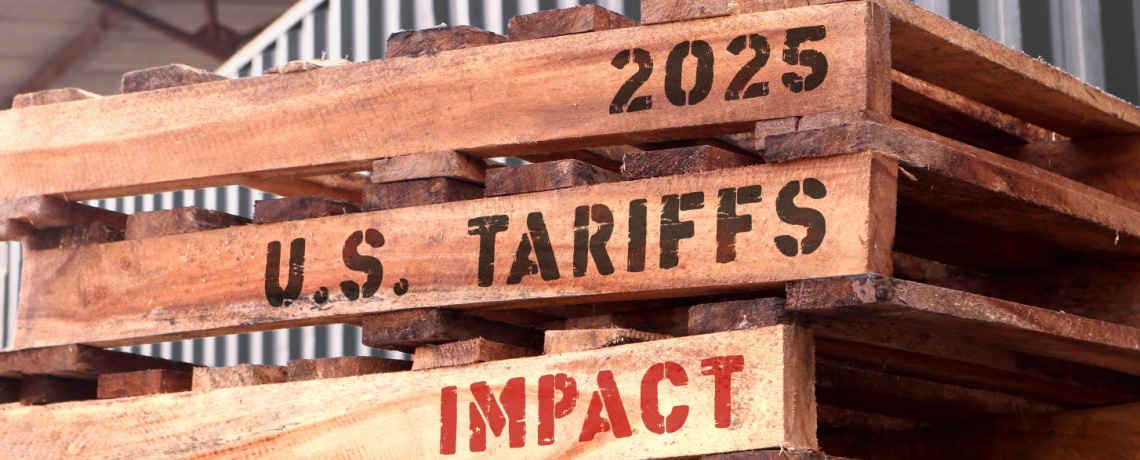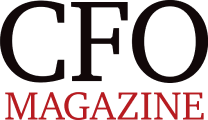
- Author: Nina Hendy
- Posted: April 14, 2025
How CFOs are dealing with Trump’s tariffs
Australian and New Zealand’s CFOs are scrambling to understand how to mitigate the fallout from Trump’s tariffs. Nina Hendy examines how local finance leaders are reacting and responding for CFO Magazine A/NZ.
News of Trump’s tariffs have landed like a firecracker among finance leaders. While Trump has offered a 90 day reprieve in recent days, when these tariffs do ultimately land, they will disrupt supply chains, cause delays and shortages on a global scale. And CFOs will be expected to steady the ship.
Known as a tax levied by the government on imported goods, tariffs vary based on the type of product, the value and various other factors. No matter how you look at it, tariffs are going to squeeze cash flow by increasing costs, forcing CFOs back to the negotiation table with supply chain managers to renegotiate sourcing strategies.
News that the hardline tariffs are on the way has already caused havoc by turning the global trade system upside down, wiping trillions of dollars of value from global stock markets. For jittery investors and finance leaders, how the tariffs will play out is extremely difficult to predict.
While businesses will pass on the increased costs of tariffs to consumers, the fact is that the prices for goods and services will rise, which can result in reduced consumer spending and ultimately, lower sales volumes. This will impact overall business performance.
The Tax Institute warns that tax professionals able to help businesses navigate the tariffs are in short supply.
According to Hays, there’s a critical shortage of skilled tax professionals, with financial and insurance services reporting a 51 per cent skill gap in its inaugural skills report. This means the consequences are being felt across the board, from small businesses to large corporations.
Disruption on the way
While a number of CFOs approached for comment felt it was too early to comment publicly about how they’re preparing for the tariffs, one New Zealand CFO offered a few insights.
Graham Bass, CFO for New Zealand’s Cambridge Clothing admits he’s talking to Chinese suppliers to see if he can buy fabric in CNY, pushing his Indonesian manufacturer to bill in something other than USD (perhaps IDR or AUD).
“This will certainly disrupt the market as those who are severely impacted chase other business and drives prices down.”
Another concern is marine cargo. He recalls that during Covid, container loads rose from $3,000 to $18,000 within five weeks. There are also plans to sign a free trade agreement with Australia that aligns with the existing ASEAN treaty.
“The tariffs will have no direct impact on our existing trading arrangements, but the impact on our supply chain adds a lot of uncertainty when no extra challenges are welcome. The foreign exchange variation is very painful.
“We are actively considering changing from paying Asian suppliers in USD to using their local currency or a mutually acceptable alternative. Specifically, most of those costs are initially incurred in China, so we will look to move that to CNY as soon as possible.
HSBC’s chief economist for A/NZ Paul Bloxham points out that rising globe trade tensions may drive a decrease in imported prices, lowering overall inflation and allowing the Reserve Bank of Australia to cut rates more, supporting local growth.
“One mechanism would be slowing global growth, which is typically disflationary. Another is that raising trade barriers for China’s manufactured exports, particularly to the US, could drive Chinese producers to look for other markets to sell their wares,” Bloxham recently wrote in The Financial Review.
Meanwhile, Bloxham points out that some observers argue that a key challenge for Australia could be that its exports are highly concentrated in iron ore, coal and gas, and have a high degree of geopolitical concentration, with China accounting for a large share of Australia’s trade.”
Time for action
Meanwhile, large accounting firms have been making recommendations for companies and finance teams for a couple of months.
EY recommends that organisations prepare for potential trade policy outcomes by conducting impact assessments, including scenario modelling and contemplating whether to diversify supply chains two months ago.
PwC also began warning that Australian businesses may need to take action to address the impact of tariffs. The firm recommends CFOs understand the customs duty profile throughout their supply chain and identify potential measures to mitigate or defer duty liabilities.
This could include tariff classifications used to potentially access lower duty rates, utilising available free trade zones, duty drawbacks and exploring customers valuation strategies.
Meanwhile, KPMG recommends that companies consider including an exclusion process whereby companies can submit specific products from imposed tariffs, which will require detailed justifications, eligibility criteria and supporting documentation.
Luke Heilbuth, a former Australian diplomat and CEO of strategic consultancy BWD Strategic points out a recent report reveals that that 96 per cent of companies had invested in new political risk management capabilities over the previous year.
“The question for your boardroom is no longer if another geopolitical storm is coming, but whether your business is structured to profit from it,” he says.
Heilbuth recommends that businesses hold additional liquidity and diversified resources and adopt regular scenario testing to document responses to disruptions.
Also, companies should ask not only ‘how can we minimise harm’, but ‘how might we benefit from this scenario?’ For example, by becoming a trusted supplier to government at a time of heightened geopolitical tension, he says.
CPA Australia urges financial leaders to access help and resources from government agencies, like Austrade.
“For many businesses, the changing economic environment is providing an impetus to diversify. It’s possible to minimise risks and seize opportunities through operational efficiencies and market diversification.”
9 Strategies for Businesses Impacted by US Trade Tariffs:
. Assess your exposure
. Conduct a financial health check
. Maintain profit margins by passing on tariff costs and/or reducing your costs and improving efficiencies
. Diversify your markets and suppliers.
. Adjust your product
. Strengthen cash flow
. Market your unique selling proposition
. Seek professional advice
. Look for new opportunities
Source: CPA Australia








